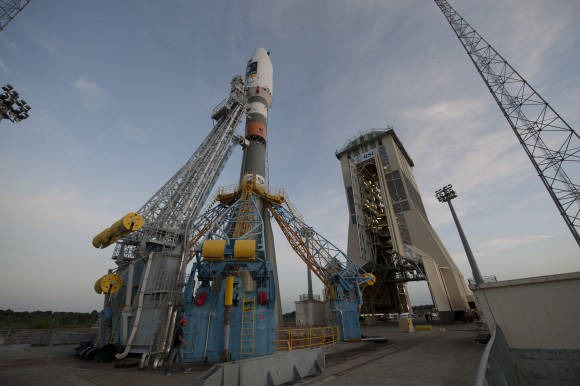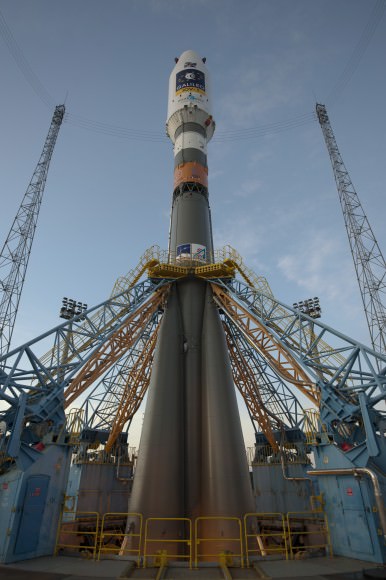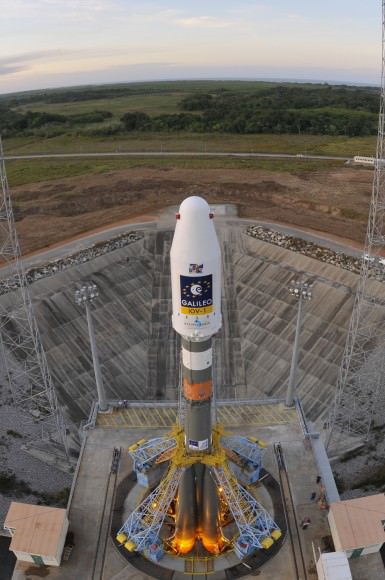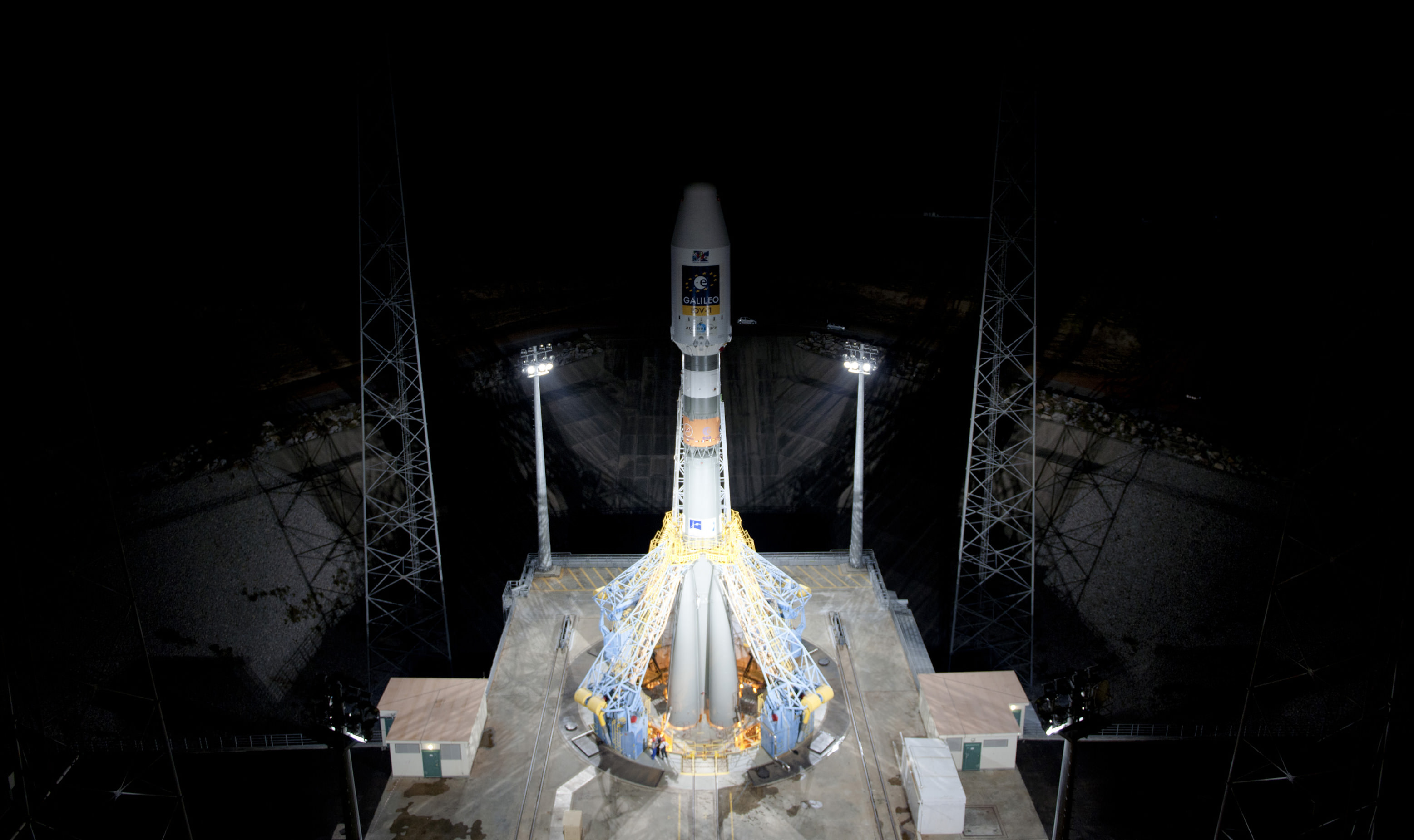[/caption]
A Russian Soyuz-2 rocket sits poised for its first ever blast off in less than 24 hours from a brand new launch pad built in the jungles of French Guiana, South America by the European Space Agency (ESA) .
The payload for the debut liftoff of the Soyuz ST-B booster consists of the first pair of operational Galilieo satellites, critical to Europe’s hopes for building an independent GPS navigation system in orbit.

The Soyuz VS01 mission is set to soar on Thursday, Oct. 20 at 6:34 a.m. EDT (1034 GMT ) from Europe’s new South American pad, specially built for the Soyuz rocket. The three stage rocket was rolled out 600 meters horizontally to the launch pad and vertically raised to its launch position.

The two Galileo satellites were mated to the Fregat-MT upper stage, enclosed inside their payload fairing and then hoisted atop the Soyuz rocket. They should seperate from the upper stage about 3.5 hous after launch.
Because French Guiana is so close to the equator, the Soyuz gains a significant boost in performance from 1.7 tons to 3 tons due to the Earth’s greater spin.
This marks the first time in history that the renowned Soyuz workhorse will blast off from outside of Kazakhstan or Russia and also the start of orbital construction of Europe’s constellation of 30 Gallileo satellites.
28 more of the navigation satellites, built by the EADS consortium based in Germany, will be lofted starting in 2012 aboard the medium class Soyuz rockets.
French Guiana is already home to Europe’s venerable Ariane rocket family and will soon expand further to include the new Vega rocket for smaller class satellites.
ESA will begin live streaming coverage starting about an hour before the planned launch time of 6:34 a.m. EDT (1034 GMT)


